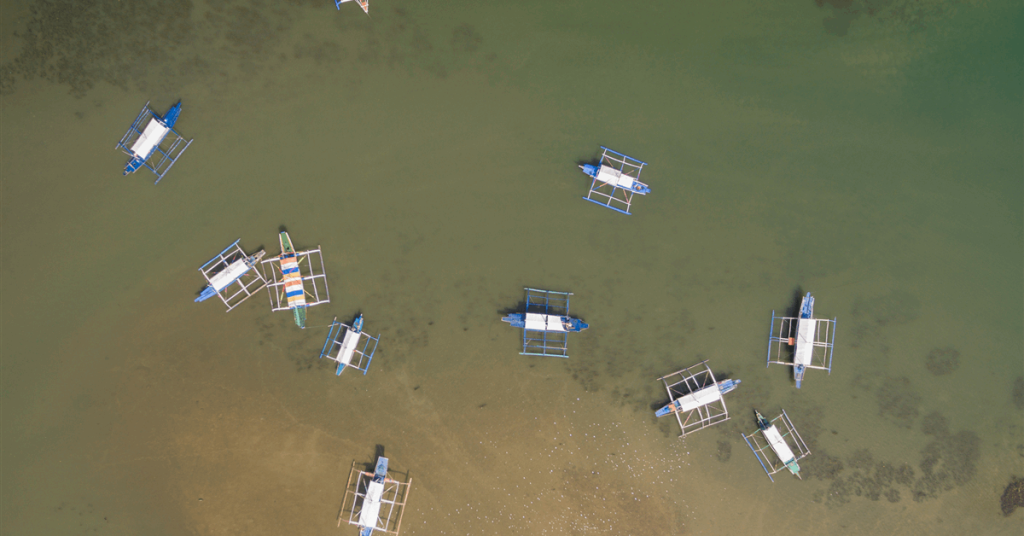President Ferdinand Marcos Jr on Wednesday signed eight licenses for oil and natural gas and hydrogen exploration across the Philippines, as the Southeast Asian country braces for depletion at its only producing gas field.
“This landmark unveiling marks the largest batch of PSCs [Petroleum Service Contracts] awarded in a single period in Philippine history, reaffirming the administration’s strong resolve to accelerate domestic energy exploration and production”, the country’s Department of Energy (DOE) said in a statement on its website.
“The new contracts also include the world’s first competitive bid round for native hydrogen, alongside co-managed petroleum projects with the Bangsamoro Autonomous Region in Muslim Mindanao”.
PSCs 80 and 81 allow Australia’s Triangle Energy (Global) Ltd, the United Kingdom’s Sunda Energy PLC and the Philippines’ PXP Energy Corp and The Philodrill Corp “to revitalize petroleum exploration in the southern Sulu Sea”, the DOE said. PSC 80 covers about 780,000 hectares while PSC 81 spans around 532,000 hectares.
Triangle Energy also bagged another license for the Cagayan basin. PSC 82 has 480,000 hectares.
United States-based Koloma Inc won SCs 83 and 84 for native hydrogen exploration in Central Luzon. SCs 83 and 84 cover more than 126,600 hectares and over 85,000 hectares respectively.
PSC 85 went to Singapore’s Gas 2 Grid Pte Ltd for nearly 127,500 hectares onshore Cebu province.
PSC 86 in the Northwest Palawan Basin went to a Philippine consortium: Philodrill, Anglo Philippine Holdings Corp, PXP Energy Corp and Forum Energy Philippines Corp. The license covers 132,000 hectares.
Israel’s Ratio Petroleum Ltd won its second Philippine PSC. SC 87, like its earlier PSC 78, targets the East Palawan Basin. Under the previous license, the company “successfully conducted a 3D seismic survey last year as part of its ongoing exploration activities”, the DOE said.
“Service contractors may now commence their respective work programs, which will include geological and geophysical studies, seismic surveys and drilling activities as appropriate”, the DOE said.
“These eight PSCs signal the reinvigorated investor confidence in the Philippine upstream energy sector, paving the way for new gas exploration initiatives amid the decline of the Malampaya Gas Field”, it said.
“Collectively, the contracts represent a potential investment commitment of around $207 million over a seven-year exploration period”.
Energy Secretary Sharon S. Garin said in the statement, “These service contracts signify not only our determination to secure new energy sources, but also our readiness to embrace innovation and sustainability while reducing import dependence. From conventional petroleum to native hydrogen, we are expanding the frontiers of Philippine energy exploration”.
According to the DOE’s latest power statistics report, published June 15, coal remained the biggest contributor to the archipelago’s generation in 2024 at nearly 80,000 gigawatt hours (gWh). Coal was followed by renewables at over 28,000 gWh. Gas accounted for over 18,000 gWh, while over 1,300 gWh came from oil.
To contact the author, email jov.onsat@rigzone.com
What do you think? We’d love to hear from you, join the conversation on the
Rigzone Energy Network.
The Rigzone Energy Network is a new social experience created for you and all energy professionals to Speak Up about our industry, share knowledge, connect with peers and industry insiders and engage in a professional community that will empower your career in energy.
element
var scriptTag = document.createElement(‘script’);
scriptTag.src = url;
scriptTag.async = true;
scriptTag.onload = implementationCode;
scriptTag.onreadystatechange = implementationCode;
location.appendChild(scriptTag);
};
var div = document.getElementById(‘rigzonelogo’);
div.innerHTML += ” +
‘‘ +
”;
var initJobSearch = function () {
//console.log(“call back”);
}
var addMetaPixel = function () {
if (-1 > -1 || -1 > -1) {
/*Meta Pixel Code*/
!function(f,b,e,v,n,t,s)
{if(f.fbq)return;n=f.fbq=function(){n.callMethod?
n.callMethod.apply(n,arguments):n.queue.push(arguments)};
if(!f._fbq)f._fbq=n;n.push=n;n.loaded=!0;n.version=’2.0′;
n.queue=[];t=b.createElement(e);t.async=!0;
t.src=v;s=b.getElementsByTagName(e)[0];
s.parentNode.insertBefore(t,s)}(window, document,’script’,
‘https://connect.facebook.net/en_US/fbevents.js’);
fbq(‘init’, ‘1517407191885185’);
fbq(‘track’, ‘PageView’);
/*End Meta Pixel Code*/
} else if (0 > -1 && 80 > -1)
{
/*Meta Pixel Code*/
!function(f,b,e,v,n,t,s)
{if(f.fbq)return;n=f.fbq=function(){n.callMethod?
n.callMethod.apply(n,arguments):n.queue.push(arguments)};
if(!f._fbq)f._fbq=n;n.push=n;n.loaded=!0;n.version=’2.0′;
n.queue=[];t=b.createElement(e);t.async=!0;
t.src=v;s=b.getElementsByTagName(e)[0];
s.parentNode.insertBefore(t,s)}(window, document,’script’,
‘https://connect.facebook.net/en_US/fbevents.js’);
fbq(‘init’, ‘1517407191885185’);
fbq(‘track’, ‘PageView’);
/*End Meta Pixel Code*/
}
}
// function gtmFunctionForLayout()
// {
//loadJS(“https://www.googletagmanager.com/gtag/js?id=G-K6ZDLWV6VX”, initJobSearch, document.body);
//}
// window.onload = (e => {
// setTimeout(
// function () {
// document.addEventListener(“DOMContentLoaded”, function () {
// // Select all anchor elements with class ‘ui-tabs-anchor’
// const anchors = document.querySelectorAll(‘a .ui-tabs-anchor’);
// // Loop through each anchor and remove the role attribute if it is set to “presentation”
// anchors.forEach(anchor => {
// if (anchor.getAttribute(‘role’) === ‘presentation’) {
// anchor.removeAttribute(‘role’);
// }
// });
// });
// }
// , 200);
//});

